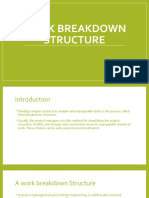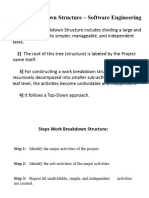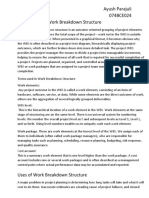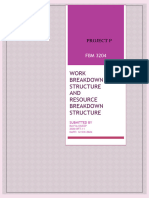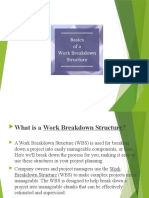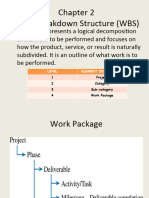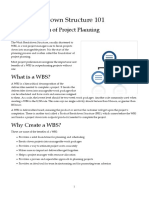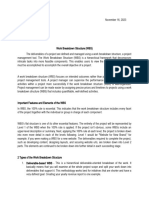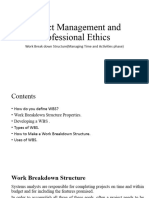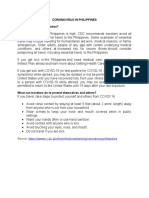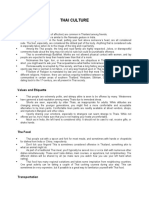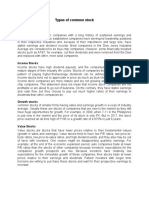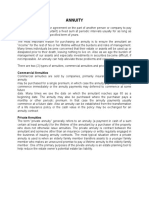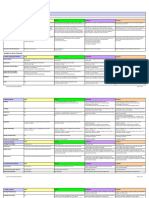0% found this document useful (0 votes)
78 views19 pagesGlobal School of Project Management University For International Cooperation
The WBS assists project leaders in developing a clear vision of project deliverables. It provides a graphical or textual outline that decomposes the overall project scope into clearly defined deliverables. The depth of the WBS depends on the project size and complexity, with each level providing more detail. The WBS should include 100% of the defined project scope. Work packages in the WBS should be estimable, quick to complete, non-interruptible, and potentially outsourced. The WBS prevents missed work and facilitates communication among team members.
Uploaded by
EllaCopyright
© © All Rights Reserved
We take content rights seriously. If you suspect this is your content, claim it here.
Available Formats
Download as PPTX, PDF, TXT or read online on Scribd
0% found this document useful (0 votes)
78 views19 pagesGlobal School of Project Management University For International Cooperation
The WBS assists project leaders in developing a clear vision of project deliverables. It provides a graphical or textual outline that decomposes the overall project scope into clearly defined deliverables. The depth of the WBS depends on the project size and complexity, with each level providing more detail. The WBS should include 100% of the defined project scope. Work packages in the WBS should be estimable, quick to complete, non-interruptible, and potentially outsourced. The WBS prevents missed work and facilitates communication among team members.
Uploaded by
EllaCopyright
© © All Rights Reserved
We take content rights seriously. If you suspect this is your content, claim it here.
Available Formats
Download as PPTX, PDF, TXT or read online on Scribd
/ 19

